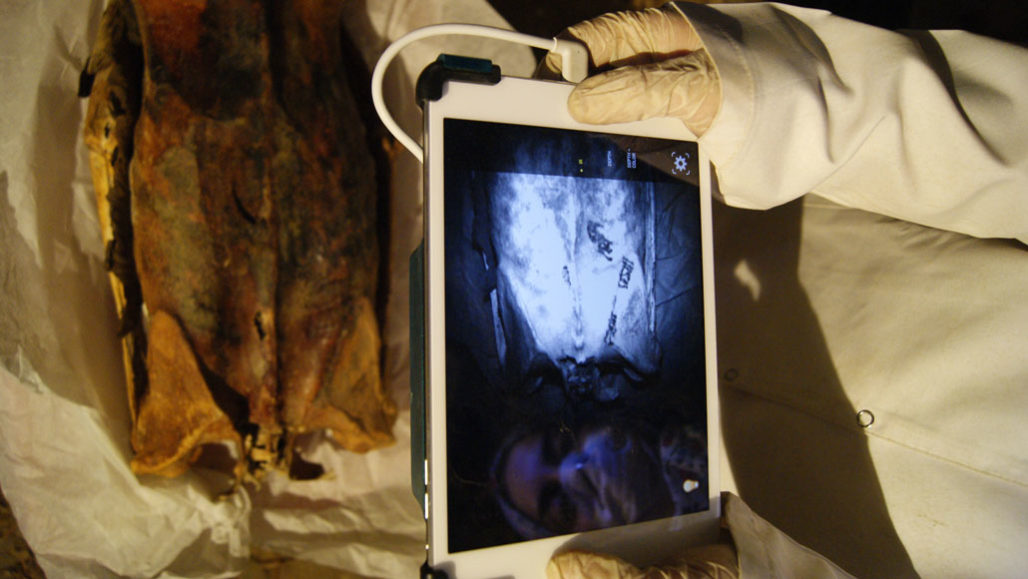Ancient Egyptian mummy tattoos come to light
Infrared images reveal eyes, animals and more on seven women

An infrared scanner reveals tattoos of eyes and a papyrus plant with water on the shoulder of an ancient Egyptian mummy.
A. Austin
Share this:
- Share via email (Opens in new window) Email
- Click to share on Facebook (Opens in new window) Facebook
- Click to share on X (Opens in new window) X
- Click to share on Pinterest (Opens in new window) Pinterest
- Click to share on Reddit (Opens in new window) Reddit
- Share to Google Classroom (Opens in new window) Google Classroom
- Click to print (Opens in new window) Print
By Bruce Bower
SAN DIEGO, Calif. — Modern technology is exposing hidden tattoos on ancient Egyptian mummies.
Archaeologist Anne Austin discovered the ink on mummified women. She used infrared (IN-frah-red) light. It can reveal things that the naked eye can’t see. “It’s quite magical to be working in an ancient tomb and suddenly see tattoos on a mummified person,” Austin said. She works at the University of Missouri–St. Louis. This technique, she notes, is transforming what’s known about tattooing in ancient Egypt.
In 2016 and 2019, Austin’s team examined mummies from a site called Deir el-Medina. This ancient Egyptian city was home to people who built and decorated royal tombs. Seven of the mummies had tattoos. Each was at least 3,000 years old.
In the most striking case, infrared photos revealed 30 tattoos on various parts of a mummy. Cross-shaped patterns on her arms don’t occur on any of the other known tattooed mummies, Austin said. And several of her tattoos look like hieroglyphs. These are symbols used in ancient Egyptian writing. The tattoos suggest this woman may have been a religious figure, Austin said.
Another woman had a tattoo on her neck. It depicts a human eye. This is an ancient Egyptian symbol for protection. She also had a tattoo of a seated baboon on each side of her neck.
These discoveries challenge an old idea that tattoos on ancient Egyptian women related to fertility. The tattoos instead may be linked with women’s roles as healers or priestesses, Austin suggested. She reported her team’s findings November 22 at a scientific meeting.
“Everything about the new tattoo discoveries is surprising,” says Kerry Muhlestein. He’s an Egyptologist at Brigham Young University in Provo, Utah. Researchers know little about this ancient Egyptian practice, he notes.
Until now, scientists knew of only six tattooed mummies from ancient Egyptian sites. The first of these was a female mummy found in 1891. More recently, infrared imaging revealed two mummies with tattoos at the British Museum in London. Those people lived in Egypt around 5,100 years ago.
Tattoos vary greatly on the 13 Egyptian mummies. More tattooed mummies may help researchers figure out how ancient Egyptians used these markings.







